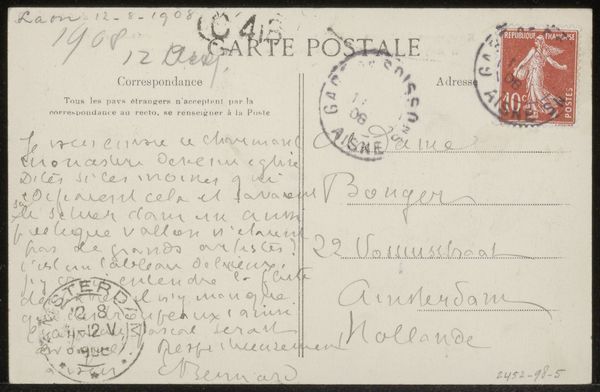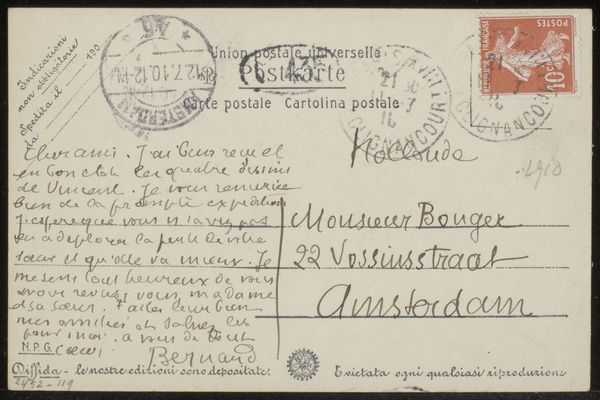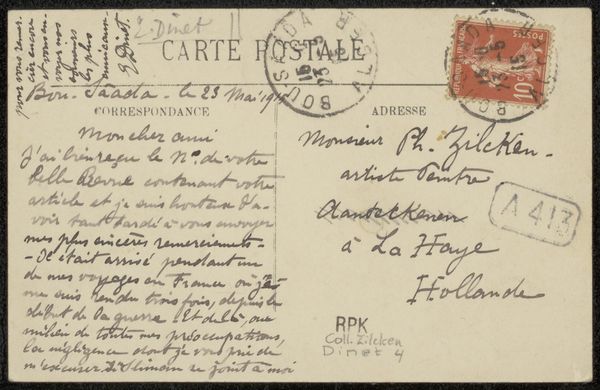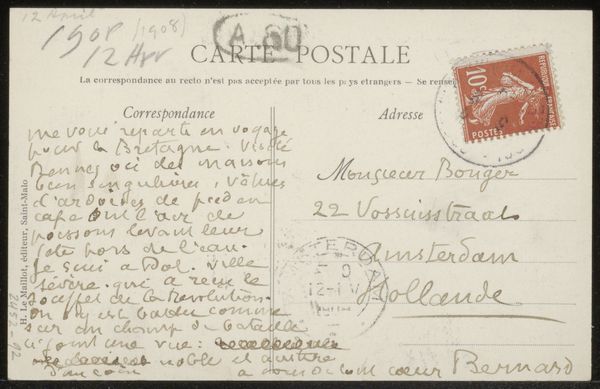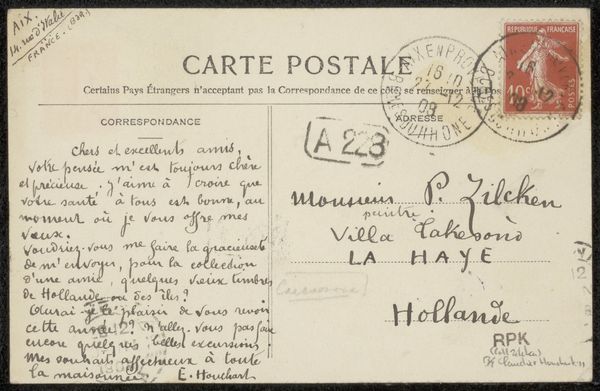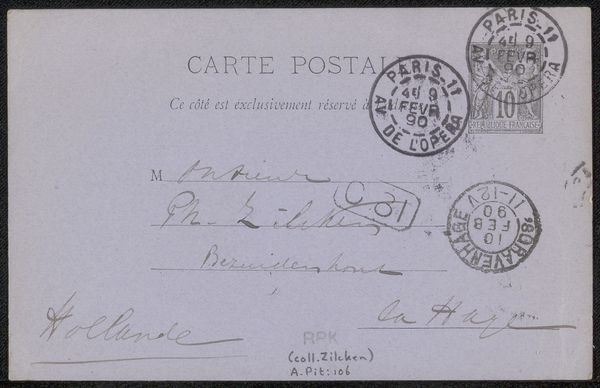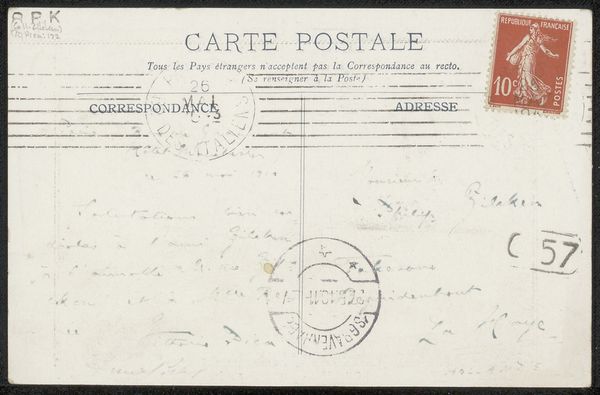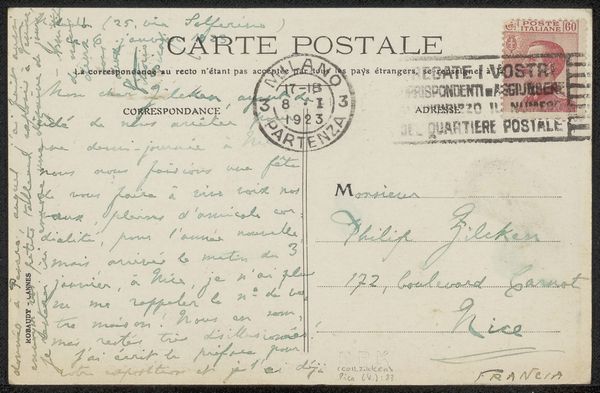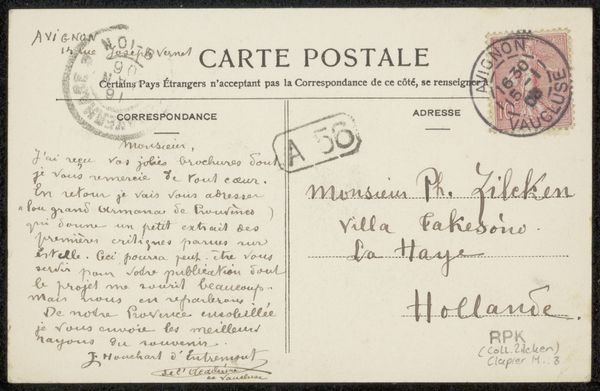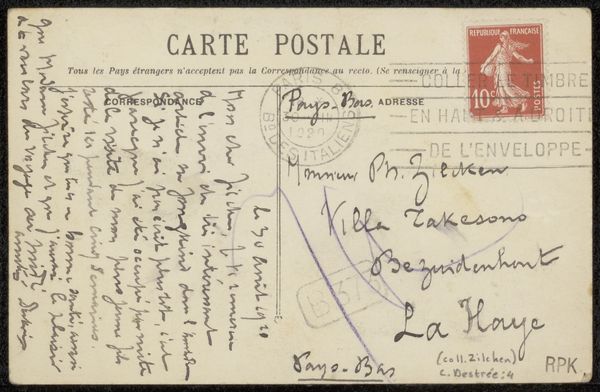
drawing, ink
#
word art style
#
drawing
#
script typography
#
hand-lettering
#
hand drawn type
#
hand lettering
#
word art
#
ink
#
hand-drawn typeface
#
fading type
#
thick font
#
symbolism
#
coloring book page
#
calligraphy
Copyright: Rijks Museum: Open Domain
Curator: This is a fascinating object: "Prentbriefkaart aan Andries Bonger" or "Picture Postcard to Andries Bonger" from before 1908 by Emile Bernard. It appears to be a postcard entirely filled with dense, calligraphic handwriting in ink. Editor: It strikes me as very intimate, almost claustrophobic. All that script filling every available space...it's as though the writer needed to fully occupy the space, or perhaps even protect something. What are your first thoughts about the materiality and the message itself? Curator: From a material perspective, I'm immediately drawn to the labor involved. The precise execution of the hand-lettering, the sheer density of the script. It blurs the line between written communication and artistic creation. It shows the carefulness of the writer who hand-draws the letters and also indicates what the sender deemed to be important information. This postcard isn't just a mass-produced item, it's a carefully crafted message using pen and ink. Editor: Absolutely. And thinking about the social context, postcards were becoming increasingly popular at this time. They offered a democratized form of communication. Looking closer at the contents of the script and stamps, we could potentially learn much more about the relationship dynamics. Was it professional? Intimate? How might identity—perhaps national identity given its sender and intended receiver residing in France and Amsterdam, respectively—shape its content? Curator: Precisely! Consider the economics as well. Sending handwritten messages like this would have required not only literacy but also leisure time. And what about the inks themselves? How easily were they available, how expensive? Each small mark is imbued with meaning not just through language, but through the very resources required to create it. Editor: It really underscores the intersection of personal expression and larger historical forces. Each inscription acts as an artifact for later audiences to understand class and personal expression; race and communication. I mean, the intimacy on display is quite touching to consider; in essence, it is the intersectionality of Bernard as communicator. What a personal touch. Curator: Definitely, this postcard provides fertile ground to analyze and contextualize the relationships within the sphere of the early 20th century artistic community. It really offers an insight on many different layers. Editor: Exactly! It feels both intensely personal and yet reflects the socio-economic conditions of its time, as the intersection of Bernard's place within larger society and culture is present throughout. Thanks for that insightful discussion.
Comments
No comments
Be the first to comment and join the conversation on the ultimate creative platform.

